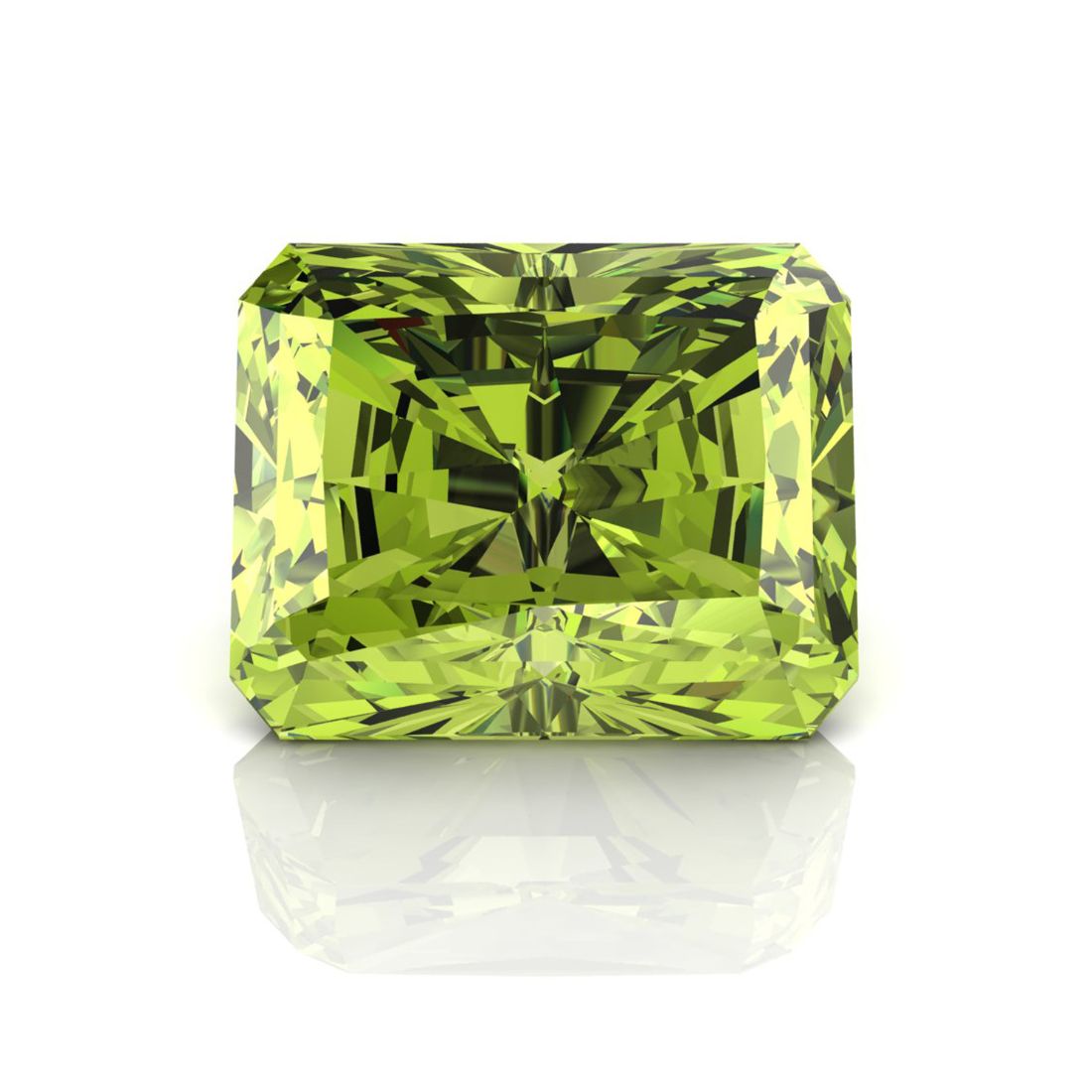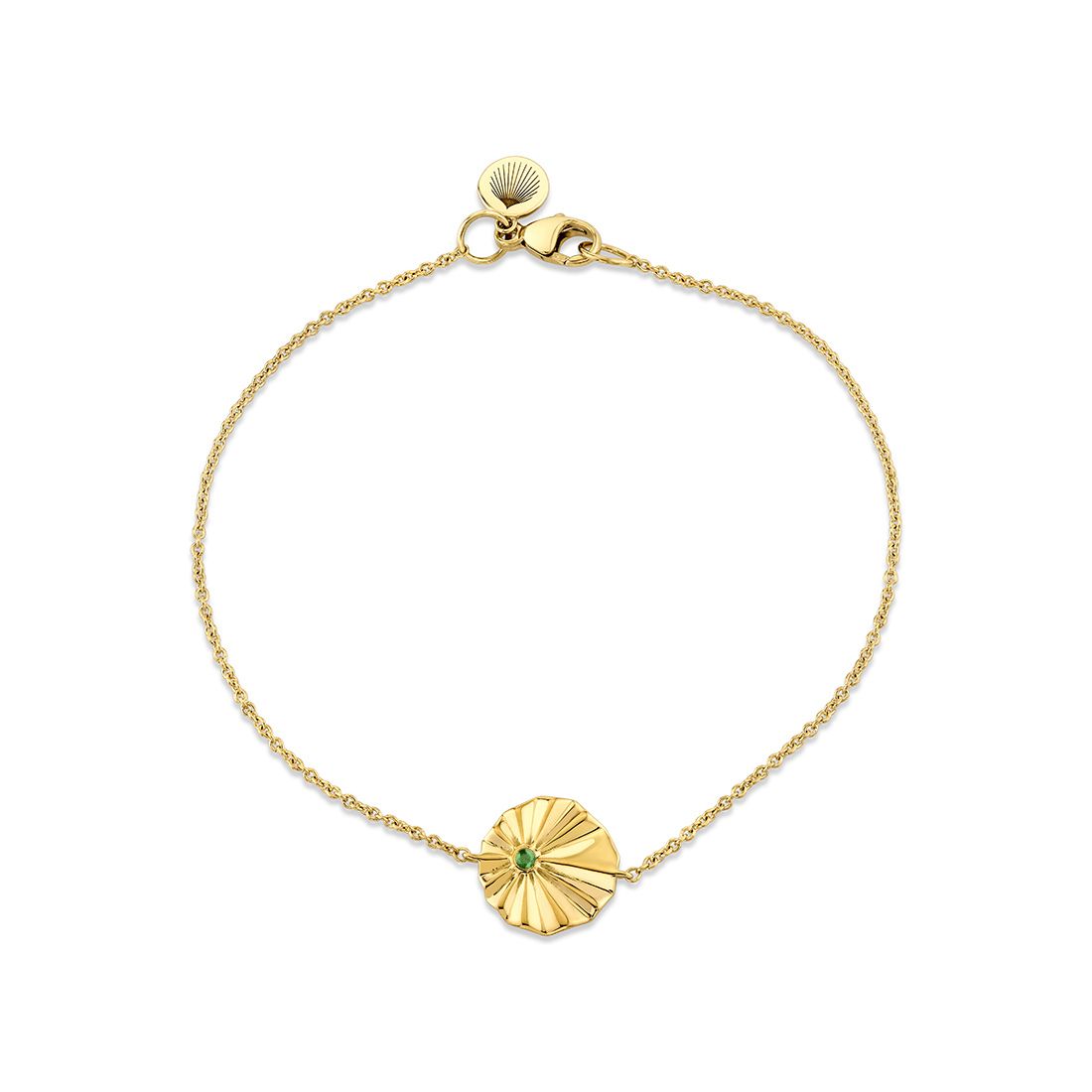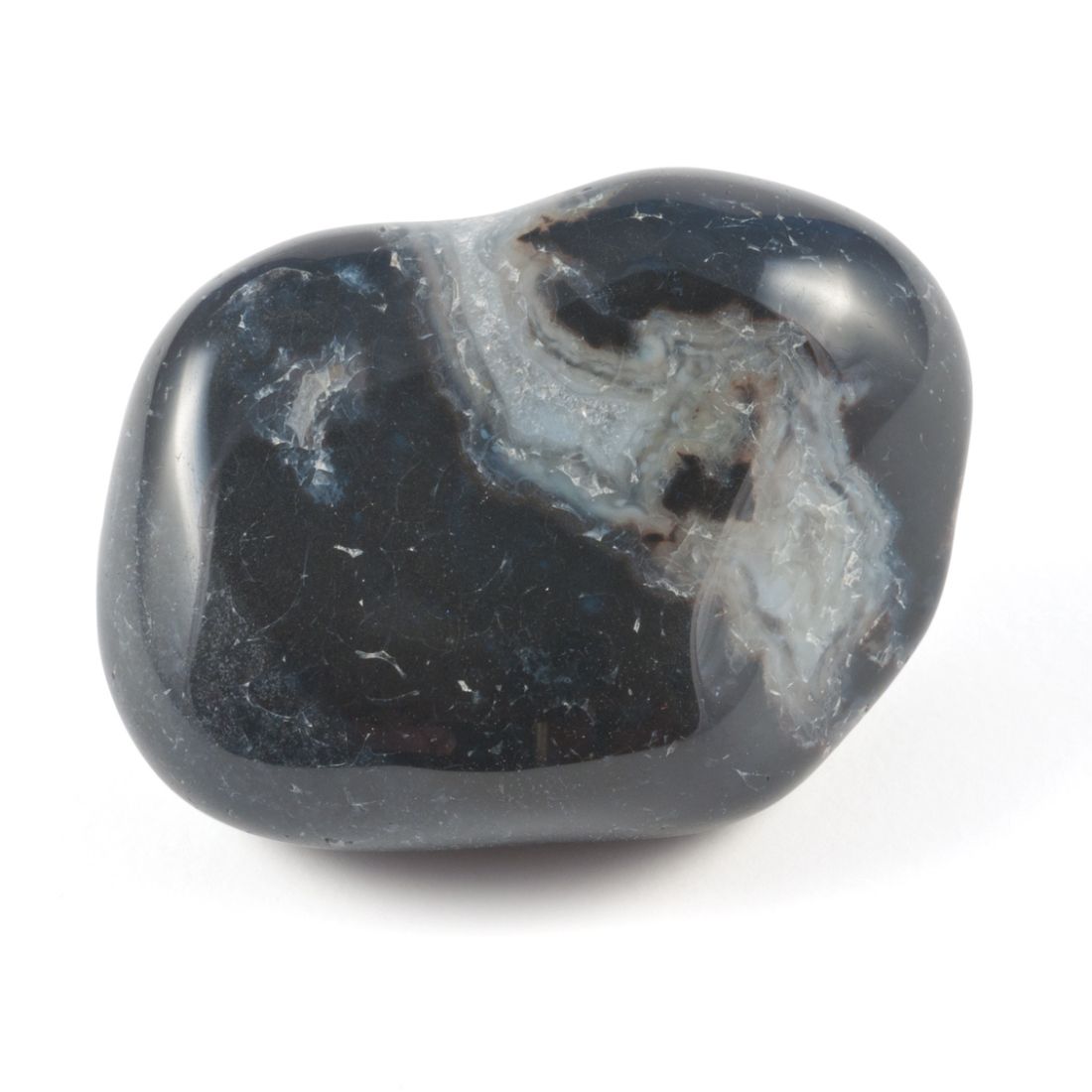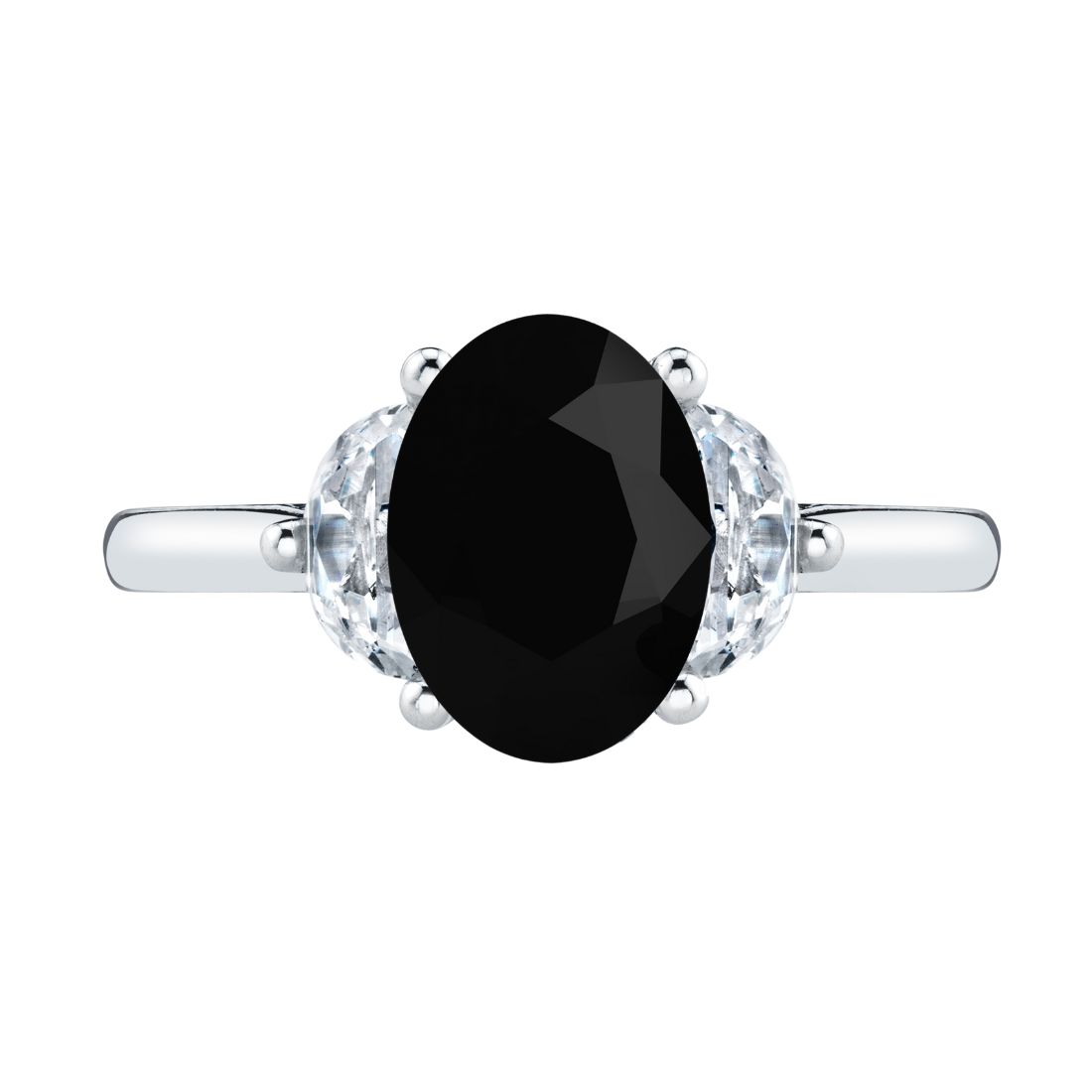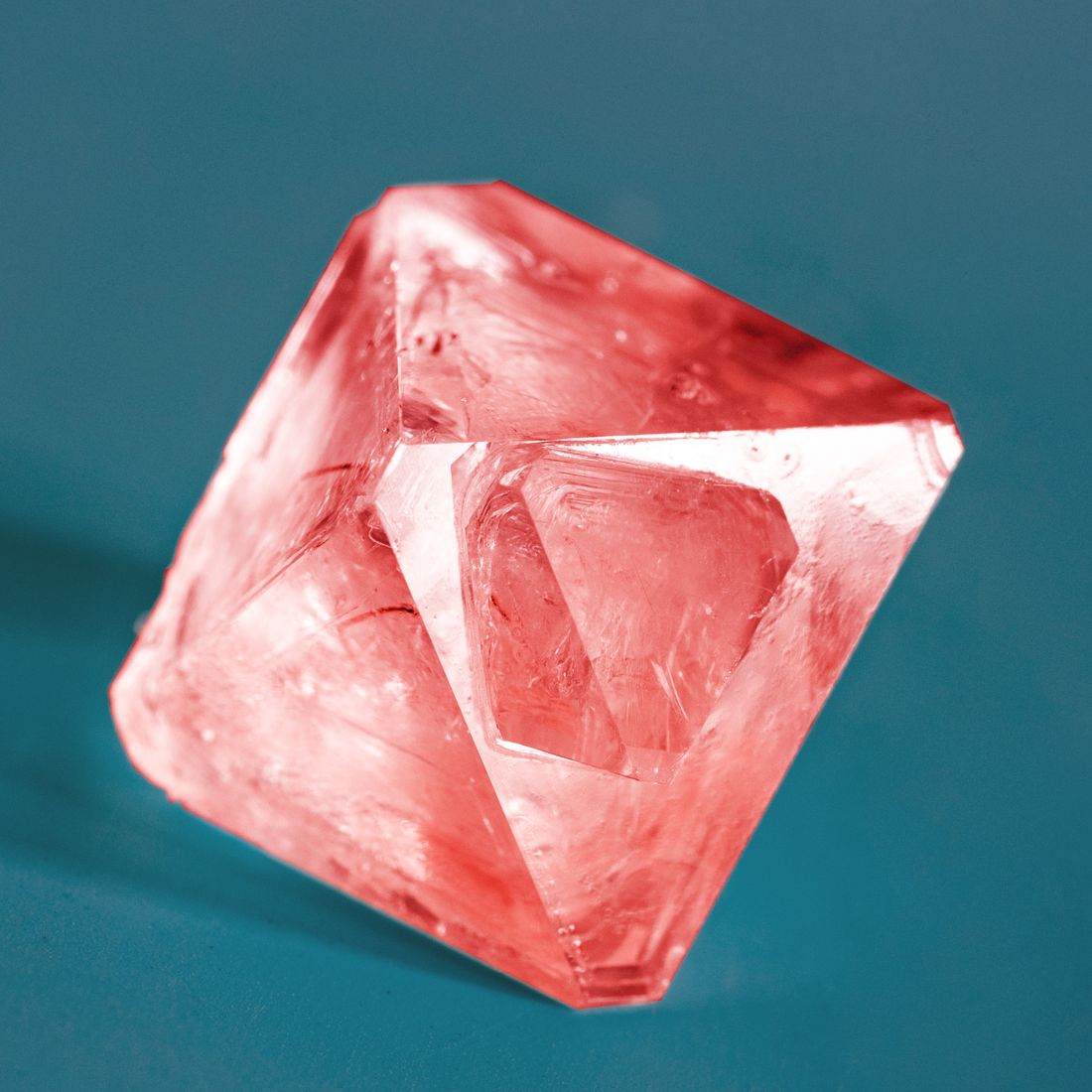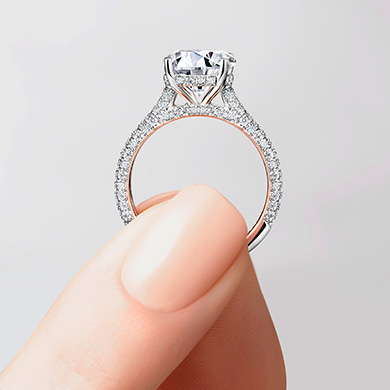August stands out from the other months of the year for its trio of birthstones: peridot, sardonyx, and spinel. While most months have one or two stones associated with them, August offers a diverse array of colors, symbolism, and unique histories through its three gemstones. In this in-depth guide, we’ll explore the origins, characteristics, symbolism, and style options for each birthstone, along with detailed care instructions to ensure your gem remains stunning for years to come.
The Origins and History of Birthstones
The concept of birthstones has a rich history that spans many cultures, beliefs, and centuries. The tradition of associating specific gemstones with birth months can be traced back to ancient times, with early references found in religious texts, folklore, and historical writings. The idea originally emerged from the Breastplate of Aaron, described in the Bible’s Book of Exodus. This sacred breastplate, worn by Aaron, the High Priest of the Israelites, featured twelve gemstones, each representing one of the twelve tribes of Israel. These twelve stones were thought to correspond to the twelve signs of the zodiac, as well as the twelve months of the year.
Establishment of Modern Birthstones
The modern concept of birthstones as we know it today began to take shape in the 18th century in Poland, where Jewish gem traders started associating specific gemstones with each month of the year. This tradition gradually spread across Europe and eventually made its way to the United States. The National Association of Jewelers (now known as Jewelers of America) officially established a standardized list of birthstones in 1912, formalizing the tradition and setting the foundation for the birthstone lists used today.
In 1952, the list was updated by the American Gem Society (AGS) to include newly discovered and popular gemstones, and in 2016, spinel was added as an official birthstone for August, joining peridot and sardonyx. These updates reflect both the evolution of gemstone availability and shifting consumer preferences. While the list continues to be revised periodically to include newly discovered gemstones or to reflect cultural trends, the core concept remains the same: each month is associated with one or more gemstones believed to bring good fortune, protection, and positive energy to those born during that time.

Linéaire Fine Line Graduated Diamond Hoop Earrings – HPS1003, Linéaire Sculpted Shell Pendant with Spaced Diamonds – PS1019, Linéaire Sculpted Shell Diamond Pendant – PS1017, Linéaire Fine Line Crossover Diamond Ring – RS1033, Linéaire Sculpted Diamond Ring – RS1030, and Linéaire Fine Line Diamond Ring – RS1035
How Gemstones Were Assigned to Each Month
Assigning gemstones to months has historically been influenced by a combination of factors, including astrological beliefs, cultural symbolism, and the availability of gemstones in various regions. In ancient cultures, gemstones were believed to have mystical properties, and wearing the stone associated with one’s birth month was thought to provide enhanced protection and blessings. Astrologers often matched gemstones with zodiac signs, attributing different powers and influences to each stone depending on the time of year.
In modern times, the selection of birthstones has also been shaped by the commercial jewelry industry, which considers factors like gem availability, popularity, and marketing potential when determining which stones are associated with each month. For example, some months, like August, have more than one birthstone due to cultural preferences, historical significance, and gemstone discoveries. This evolving list allows for a broader range of choices, making birthstone jewelry more accessible and varied for consumers.
Cultural Significance of Birthstones
Throughout history, birthstones have been more than just ornamental; they have carried deep symbolic and cultural significance. In ancient times, gemstones were believed to possess healing properties and magical powers, including the ability to ward off evil spirits, enhance personal attributes, and protect against harm. This belief extended to birthstones, with each stone being linked to certain energies and benefits that were thought to be particularly potent for individuals born in the corresponding month. Today, birthstones continue to be popular in both jewelry and spiritual practices, serving as meaningful personal symbols as well as beautiful adornments.
Peridot: The Classic August Birthstone
Origins and Historical Significance of Peridot
Peridot has an extensive history, with its earliest recorded use dating back to 1500 B.C. in ancient Egypt. The Egyptians referred to it as the “gem of the sun,” believing it had protective powers against evil spirits and brought joy to the wearer. This gem was mined on the island of Zabargad (now known as St. John’s Island) in the Red Sea. The Egyptians harvested peridot during the night, as they believed it would be more visible under the moonlight. Cleopatra, often associated with emeralds, is now thought by historians to have worn peridots instead.
Peridot’s symbolic importance spans cultures and time periods. In Hawaii, it was considered the tears of Pele, the volcano goddess, and linked to the fiery creation of the islands. In medieval Europe, peridot was used to adorn church relics, as it was believed to have healing and protective properties. Peridot has also been referenced in biblical texts as chrysolite, one of the 12 stones in Aaron’s breastplate representing the 12 tribes of Israel.
Technical Details of Peridot
Peridot is a variety of the mineral olivine, specifically the magnesium-rich form of the mineral. It typically contains iron, which gives it its characteristic yellow-green hue. Its unique color, unlike other gemstones, remains consistent under both natural and artificial light. The refractive index of peridot ranges from 1.65 to 1.69, giving it a brilliant, glassy luster. It is a transparent stone, often with inclusions that resemble “lily pads.” On the Mohs hardness scale, peridot rates between 6.5 and 7, making it somewhat soft and prone to scratching.
Symbolism and Meaning of Peridot
Peridot is associated with themes of positivity, renewal, and growth. Its bright, green hue is connected to nature, symbolizing new beginnings, abundance, and good health. It is believed to foster compassion, enhance relationships, and inspire creativity. As a stone linked to the heart chakra, peridot is thought to promote emotional balance, self-love, and forgiveness. Additionally, it is known as the “money stone,” reputed to attract wealth and prosperity. Some traditions also attribute protective qualities to peridot, suggesting it can ward off nightmares and bring restful sleep to its wearer.
Styling Recommendations for Peridot
Peridot’s vibrant color makes it a standout addition to any jewelry collection. It pairs beautifully with both gold and silver settings, allowing for diverse styling options. For formal events, a peridot necklace in a classic gold setting creates a striking focal point, especially when paired with a black or dark green dress. For a more casual look, peridot earrings or rings can be paired with white linen blouses or summer dresses, adding a refreshing pop of color to warm-weather outfits.
To create a boho-chic aesthetic, consider layering peridot bracelets with other gemstone bangles, such as turquoise or coral. This combination of colors evokes a playful, beachy vibe perfect for summer. Men can also wear peridot in cufflinks or signet rings, paired with earthy tones like beige or olive green to enhance the stone’s natural allure.
Caring for Peridot Jewelry
Due to its moderate hardness, peridot requires gentle care. Avoid exposing it to sudden temperature changes, which can cause cracking. Always store peridot separately from harder gemstones like diamonds and sapphires to prevent scratching. Clean peridot jewelry using warm, soapy water and a soft brush. Ultrasonic cleaners and steamers should be avoided, as they can damage the stone. Regularly check for loose settings to ensure the stone’s security, especially in rings and bracelets.
Sardonyx: The Ancient August Birthstone
Origins and Historical Significance of Sardonyx
Sardonyx is one of the oldest known August birthstones, with historical references dating back to ancient Greece and Rome. It was frequently used for seals, amulets, and cameos due to its hardness and layered structure, which made it easy to carve. The Greeks believed sardonyx provided protection and courage in battle, often engraving it with images of Mars, the god of war. In Roman culture, sardonyx was associated with strength, bravery, and victory, making it a popular talisman among soldiers and leaders.
The stone’s alternating layers of sard (reddish-brown) and onyx (white) give it a distinct banded appearance, symbolizing balance and harmony. Throughout history, sardonyx was believed to enhance eloquence and promote clear communication, making it a favored choice among orators and public speakers.
Technical Details of Sardonyx
Sardonyx is a variety of chalcedony, characterized by its banded structure. It rates between 6.5 and 7 on the Mohs scale of hardness, similar to peridot, making it relatively durable but not resistant to sharp impacts. Its refractive index ranges from 1.53 to 1.54, giving it a soft, waxy luster. Sardonyx is typically opaque, with its value determined by the sharpness and contrast of its banding. The stone’s layers are often arranged to create striking, eye-catching patterns, especially when cut en cabochon or engraved for cameos.
Symbolism and Meaning of Sardonyx
Sardonyx has long been associated with courage, stability, and integrity. It is thought to promote strength and stamina, making it an ideal stone for those seeking endurance and resilience. The stone’s banded appearance is symbolic of harmony, emphasizing the importance of balance in personal relationships and within oneself. Sardonyx is also connected to marriage and fidelity, believed to strengthen bonds and enhance mutual trust. It has traditionally been used in amulets to ward off misfortune and attract good fortune, making it a popular choice for protection.
Styling Recommendations for Sardonyx
Sardonyx’s earthy tones and distinctive patterns make it a bold choice for statement jewelry. For a vintage-inspired look, consider a sardonyx pendant or brooch in a gold setting, which complements the stone’s warm hues. Sardonyx rings, especially those carved as signet rings, add a touch of elegance to formal outfits and are particularly suited for men’s jewelry.
For casual wear, sardonyx beaded necklaces or bracelets can be paired with bohemian outfits, such as flowy skirts or embroidered tops. The stone’s rustic appeal also pairs well with leather accessories, adding a rugged, natural vibe. Sardonyx earrings, especially drop or chandelier styles, can enhance earthy-toned outfits, making them perfect for autumnal events or outdoor gatherings.
Caring for Sardonyx Jewelry
Like peridot, sardonyx should be protected from sharp impacts and abrasive surfaces to maintain its appearance. Clean it gently with a soft cloth and warm, soapy water, avoiding harsh chemicals or ultrasonic cleaners. Store sardonyx jewelry separately to prevent scratches and ensure that settings are secure, particularly for pieces with intricate carvings or bands. Regular maintenance will keep sardonyx’s bands and patterns looking distinct and vibrant.
Spinel: The Newest August Birthstone
Origins and Historical Significance of Spinel
Spinel’s history stretches back thousands of years, but it wasn’t officially recognized as an August birthstone until 2016, when it was added to the modern birthstone list by the Jewelers of America and the American Gem Trade Association. Spinel’s vibrant colors, which include red, blue, pink, lavender, and black, were often mistaken for rubies and sapphires in historical settings. The famous Black Prince’s Ruby in the British Imperial State Crown is, in fact, a spinel, highlighting its historical misidentification.
In addition to its regal history, spinel has been associated with spirituality, energy, and revitalization. It has been found in regions like Myanmar, Sri Lanka, Afghanistan, and Madagascar, each producing unique variations of the gemstone. Spinel’s allure is its range of colors, from fiery reds and vibrant pinks to cool blues and deep blacks.
Technical Details of Spinel
Spinel is a magnesium aluminum oxide mineral known for its durability and brilliance. It has a Mohs hardness rating of 7.5 to 8, making it the hardest of the three August birthstones and suitable for various jewelry pieces, including rings and bracelets that may experience regular wear. Spinel forms in cubic crystals, often resulting in well-defined octahedral shapes. This structural composition contributes to its impressive luster and light performance, giving spinel a striking brilliance that rivals sapphires and rubies.
The refractive index of spinel ranges from 1.71 to 1.78, a characteristic that enhances its brightness and gives it a vivid sparkle. Spinel has a specific gravity of 3.58 to 3.61, which is typical for denser gemstones. It is considered a singly refractive gem, meaning it maintains a consistent color and clarity under different lighting conditions, unlike some other gemstones that may display pleochroism (variations in color). The crystal clarity of spinel is often high, with many stones being eye-clean—particularly smaller sizes and those in lighter hues.
Spinel’s color variety is one of its standout features, thanks to trace elements like chromium, cobalt, and iron. These trace minerals contribute to spinel’s broad spectrum of hues, which includes vibrant reds, pinks, blues, purples, and even black. Red and pink spinels derive their color from chromium, similar to rubies, while cobalt gives rise to vivid blue spinels. Inclusions in spinel are often minimal, but when present, they may enhance the stone’s aesthetic by adding visual texture without diminishing its transparency or color.
Symbolism and Meaning of Spinel
Spinel is a gemstone that embodies themes of revitalization, resilience, and passion. Historically linked to royalty due to its appearance in crowns and regal jewelry, spinel symbolizes power, wealth, and prestige. In modern metaphysical traditions, spinel is believed to enhance energy, encourage mental clarity, and foster perseverance. Each color variation of spinel carries its own unique symbolism: red spinel represents passion and courage, blue spinel is associated with calming energies and self-reflection, while pink spinel signifies love and compassion. Spinel is often worn as a talisman to inspire hope and renewal, making it an ideal stone for those experiencing major life transitions or seeking fresh starts.
Styling Recommendations for Spinel
Spinel’s wide range of colors makes it a versatile option for both classic and contemporary jewelry designs. For elegant evening wear, a red spinel ring set in platinum or white gold can make a bold statement, especially when paired with a dark, formal gown. Blue spinel necklaces or earrings add a touch of sophistication to cocktail dresses, while pink spinel pieces create a playful, feminine vibe that pairs well with floral prints or pastel outfits. Spinel’s durability also makes it suitable for daily wear—consider incorporating it into engagement rings, stacking rings, or even gemstone-studded bangles for a trendy, layered look.
For a more casual look, black spinel offers an edgy touch that pairs well with leather accessories or darker, minimalist attire. Men’s jewelry collections can also benefit from spinel’s rich hues, whether it’s a blue spinel cufflink for a polished appearance or a red spinel pendant for a more adventurous style.
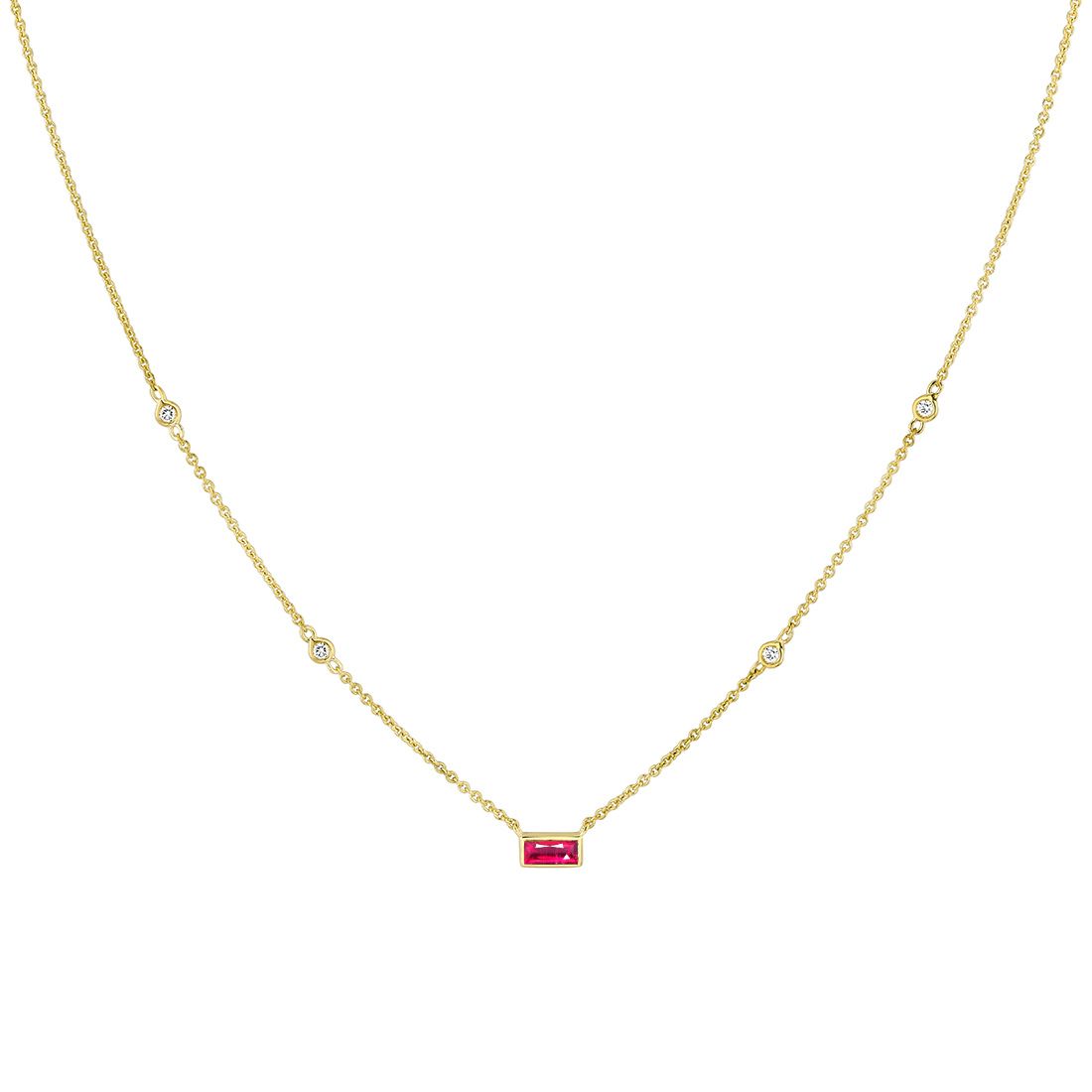
Bezel Chain Necklace – NS1019
Caring for Spinel Jewelry
Spinel is one of the most resilient August birthstones, but it still requires proper care to maintain its brilliance. It can be cleaned using warm, soapy water and a soft brush, and it can also withstand gentle ultrasonic cleaning. However, it’s important to avoid exposure to harsh chemicals or direct heat, as this can alter the color of certain treated spinels. To prevent scratches, store spinel jewelry separately from harder gemstones like diamonds and sapphires. Routine checks on prongs and settings are also advised, especially for rings and other pieces that experience daily wear.
How to Combine August Birthstones in Jewelry
For those drawn to all three August birthstones, combining them in a single piece of jewelry can create a striking, multi-dimensional look. A pendant featuring peridot, sardonyx, and spinel can symbolize the wearer’s connection to the multifaceted nature of August. Similarly, a bracelet or ring that incorporates these stones can serve as a powerful talisman representing the wearer’s strengths, passions, and protective energies.
When combining these gems, consider complementary metal choices to enhance their unique colors. For example, yellow gold brings warmth to peridot and sardonyx, while platinum or white gold enhances the brilliance of spinel. The contrast of these stones’ colors—green peridot, striped sardonyx, and vibrant spinel—creates a visually dynamic piece that celebrates the diverse qualities of the August birthstones.
Final Thoughts
Whether you’re drawn to the cheerful glow of peridot, the ancient strength of sardonyx, or the vibrant allure of spinel, each of these August birthstones offers a unique blend of beauty, history, and symbolism. Embracing any of these gems allows August-born individuals to celebrate their birth month with a touch of elegance, strength, and personal meaning. By understanding the unique characteristics, styling possibilities, and care requirements of each stone, you can make an informed choice that aligns with your personal taste and lifestyle.
See Other Posts About Birthstones by Month
- January birthstones
- February birthstones
- March birthstones
- April birthstones
- May birthstones
- June birthstones
- July birthstones
- September birthstones
- October birthstones
- November birthstones
- December birthstones
Common Questions about August Birthstones
With three unique gemstones—peridot, sardonyx, and spinel—August birthstones offer a wide variety of colors, symbolism, and styles. Below, we answer some of the most common questions people have about these vibrant stones.
What are the three August birthstones?
The three official birthstones for August are peridot, sardonyx, and spinel. Peridot is the traditional birthstone, while sardonyx has historical significance as an ancient stone, and spinel was added to the list in 2016.
Why does August have three birthstones?
August has three birthstones due to historical tradition, gemstone availability, and the evolving preferences of the jewelry industry. Sardonyx was the original birthstone for August, peridot became popular in more modern times, and spinel was recognized more recently to offer more variety for August-born individuals.
What is the primary birthstone for August?
Peridot is generally considered the primary birthstone for August. It is the most well-known and widely recognized of the three stones, symbolizing abundance, protection, and positivity.
What is the color of peridot?
Peridot is known for its distinctive yellow-green hue, which can range from pale lime green to a richer olive shade. Its color is caused by the presence of iron in its composition, and it remains consistently green under various lighting conditions.
How is spinel different from rubies and sapphires?
Spinel is often mistaken for rubies or sapphires due to its similar color range and brilliance. However, spinel is a separate mineral species with a different crystal structure. It is also less expensive than rubies and sapphires, making it a more affordable option for vibrant red and blue gems.
What is the significance of sardonyx?
Sardonyx symbolizes strength, courage, and protection. It has been used historically in amulets, cameos, and seals, particularly by ancient Greeks and Romans who believed it brought victory in battle and enhanced communication skills.
Are August birthstones rare?
Among the three, spinel can be considered rarer, especially in its more vivid hues like red and blue. Peridot is relatively common, though high-quality stones can be rare. Sardonyx is also fairly accessible, with variations found in many parts of the world.
How do I care for my August birthstone jewelry?
Peridot and sardonyx, both with a hardness rating of 6.5 to 7, should be cleaned gently with warm, soapy water and a soft brush. Spinel, being harder (7.5 to 8), can withstand more rigorous cleaning methods, including ultrasonic cleaning. It’s always best to store these stones separately to avoid scratches.
Can peridot be used in engagement rings?
While peridot’s beautiful green color makes it an appealing choice for engagement rings, its softer nature (6.5-7 on the Mohs scale) means it requires more care and protection in everyday wear. It’s ideal for engagement rings with protective settings like bezel or halo styles.
Is spinel suitable for everyday wear?
Yes, spinel’s hardness and durability make it an excellent option for daily wear, whether in rings, pendants, or earrings. It is resistant to scratches and holds up well in various types of jewelry.
What are the metaphysical properties of peridot?
Peridot is believed to bring good luck, abundance, and positive energy. It is often associated with the heart chakra, promoting love, compassion, and emotional balance. It is also thought to protect against negativity and enhance mental clarity.
Can sardonyx be found in different colors?
Sardonyx primarily features layers of reddish-brown and white bands, though variations in its color intensity can occur depending on the specific combination of sard and onyx within the stone. This creates a distinctive banded appearance, which is the hallmark of sardonyx.
What jewelry pieces are best for August birthstones?
All three August birthstones are versatile, suitable for rings, earrings, necklaces, and bracelets. Peridot is particularly popular in pendants and earrings, while sardonyx shines in cameos and vintage-style pieces. Spinel’s vibrant colors make it a great choice for statement rings and cocktail jewelry.
Are there any famous peridots, spinels, or sardonyxes?
Famous peridots include those found in historical artifacts like Cleopatra’s jewelry, while spinels are featured in notable pieces like the Black Prince’s Ruby in the British Crown Jewels (despite its name). Sardonyx has been used in ancient cameos and seals, making appearances in museums worldwide.
What zodiac signs are associated with August birthstones?
August birthstones are linked to the Leo and Virgo zodiac signs. Peridot is often associated with the Leo sign due to its vibrant energy, while spinel and sardonyx can also be linked to Virgo’s more grounded and balanced traits.

